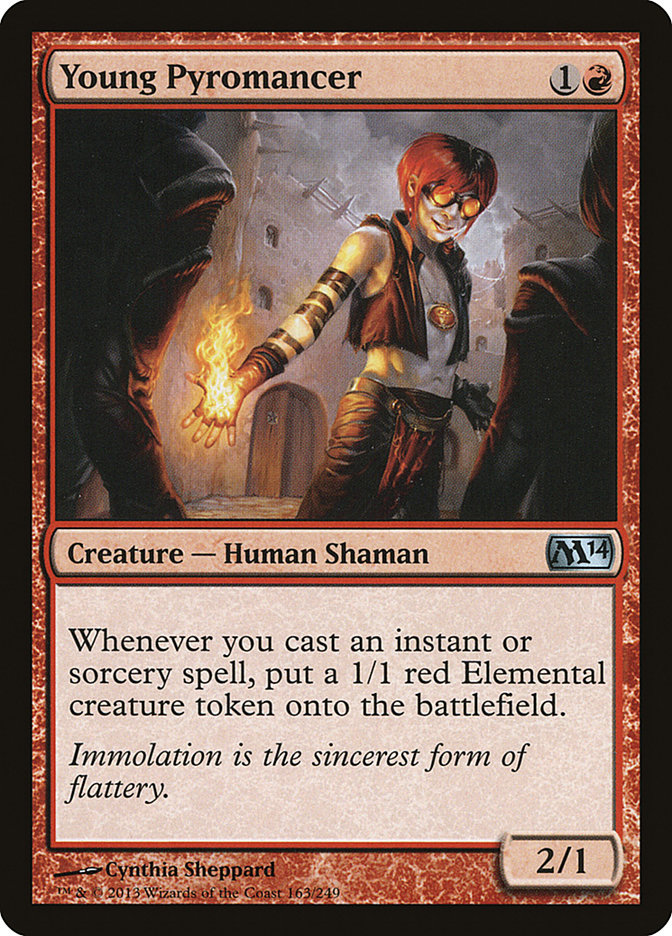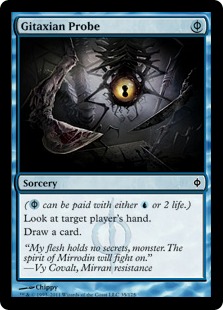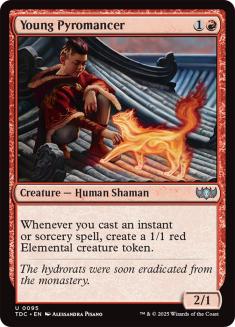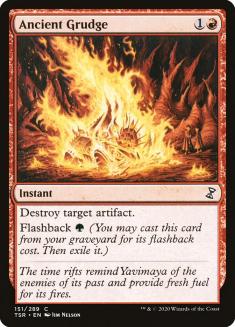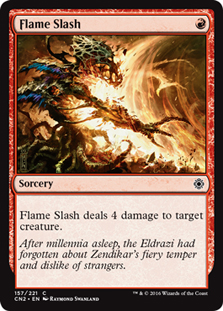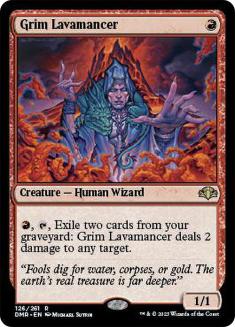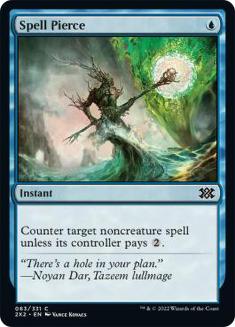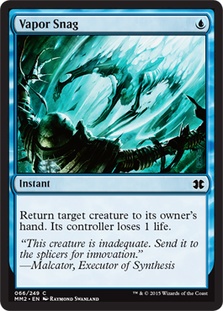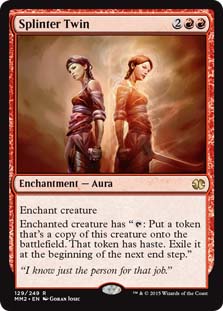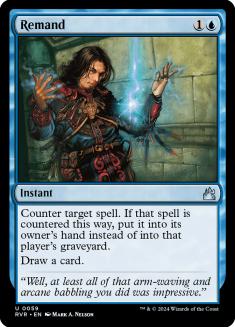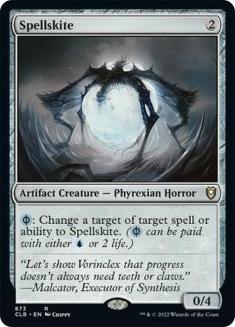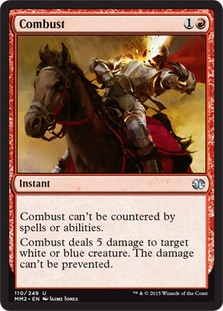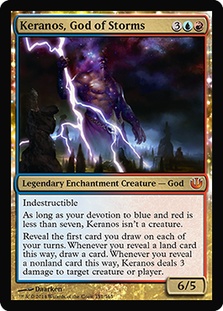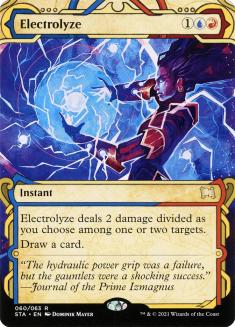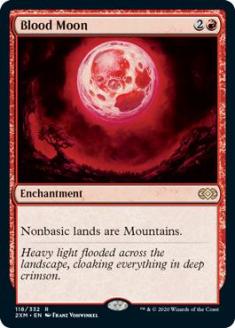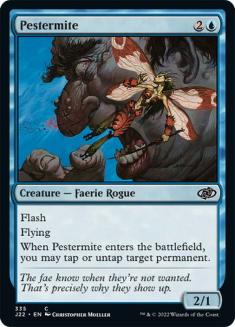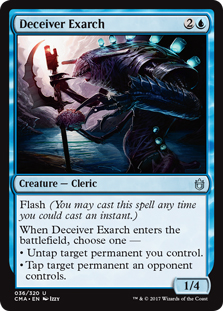The room for innovation within the Splinter Twin archetype in Modern is almost limitless. It seems that nearly every few weeks to a month, someone,
somewhere, is looking to push the boundaries of what a Splinter Twin deck should look like. Luckily, in Modern, the word “should” is one that doesn’t quite
fit. Players looking to just pick up the “best” deck without any practice is at a much, much bigger disadvantage than they would be in other formats,
especially because of how much the players that focus on Modern excel.
Splinter Twin has been my deck of choice for about five months now, and I’ve gone through so many iterations of the deck that I’ve lost count. Between a
ridiculously large amount of hours put into it, a whole lot of failures, and a few minor progressions, I’ve come to a handful of lists that I’m positive
can get you some pretty significant edges in your PTQ season.
The biggest thing for Splinter Twin players at this point in the format is to have a solid plan B. RUG Twin is the most attractive option because it has
the most obvious and straightforward plan B. You don’t really have to work for it, you just play a Tarmogoyf and let it do its thing. Of course, this isn’t
a bad thing. Sometimes, you just want the job done, and the goal is to get the job done. UR Twin has indirectly suffered because of this, and the amount of
innovation in that department has diminished greatly outside of Patrick Dickmann being a master.
Creatures (13)
Lands (22)
Spells (25)

As an aside, I think many players overstate the term innovation, and all other synonymous terms. You don’t necessarily have to reach far for a “spicy” or
“tech” card to be innovative, and doing it just to be cute is anything but. Every single decision Patrick, and many other builders make are conscious
decisions that they feel will help their chances of winning a tournament. In the end, they want to win tournaments, not contextual beauty
pageants.
With this particular Splinter Twin build, you don’t see anything too far out of the ordinary except for two maindeck Spreading Seas. This gives you a large
edge against Celestial Colonnade and other man-lands. It also disrupts almost any three-color manabase in general, and any deck trying to cast
mana-intensive spells. This, combined with how aggressive the format has gotten lately (combo strategies have more ways to red-zone than ever), and you
have a fine replacement for Gitaxian Probe, while still using Peek as a supplement. This particular build was very specifically designed to attack a
certain field, and Modern specialists will tell you every time how important it is to keep a close eye on things when preparing for a tournament.
Compare this to the Scry-Twin deck I talked about in my last Modern Misfits piece:
Creatures (13)
Lands (22)
Spells (25)

This is much easier to play when the format is slower, when things aren’t trying to push an advantage from the get-go. A field of, say, U/W/R variants,
Jund, and other Twin decks is the kind of field where this will thrive. Against Pod, however, having a land that comes into play tapped can completely
destroy you. Granted, you should be building your deck in a way that you can minimize the effect it has on you, but even so, we can only fit in so many
Dismembers, Flame Slashes, and Spell Snares before getting run over by Affinity and Zoo. Your plan B here was to simply out value your opponent, but when
they aren’t giving you time to do that, then you’re better off fighting them on their level first. UWR Twin shines in these kinds of fields because they
have the best assortment of removal available among the visited builds.
So why would you play U/R Twin over either of these?
– Your mana is significantly better:
Contrary to popular belief, mana is not nearly as good as people think it is in Modern. There is no such thing as “perfect” mana, you aren’t safe from
disruption like you are in Standard, and there are a ton of ways to get punished without even knowing it. Two color decks are in the minority because the
upside of having a third color is in-your-face high. Sticking to two colors yields some major benefits in such a subtle manner that you may never notice
all of the ways you secure yourself from the massive amount of punishers out there.
– In turn, it’s easier to punish others for their manabase
The obvious candidates for this in Twin’s case is Blood Moon and Spreading Seas, on top of the already popular Tectonic Edge, and both of which are
incredibly powerful alternate strategies when your opponent is trying to defend against your plan A and plan B. The great thing about this perk is that you
can pretty much go as deep as you want. Molten Rain, for example, has always been a very powerful card in Modern due to how it attacks mana and
planeswalkers, and assuming that they can resolve one in the first place, you can really put the pressure on their lines of defense by cutting off their
primary sources of interaction.
– Your aggressive matchups improve greatly
Say what you will about aggressive decks. Fact is that you will play against them at PTQs, and they are very capable of punishing you for shocking
yourself. Having a manabase that isn’t painful can go such a long way toward how long you can stay in a game, even against mirrors. Against decks like
Delver, going to eighteen life is often times giving them as much as a time walk!
So, the big question remains for U/R Twin players: what’s your plan B, and why should I play it over RUG Twin’s or UWR Twin’s plan B?
Taking a page from U/R Delver strategies. Young Pyromancer fits perfectly.
Many of U/R Twin’s plan B’s beforehand involved sidestepping a million things and hopefully getting there with a combination of Snapcaster Mage, Vendilion
Clique, Grim Lavamancer, and/or any other sources of damage they could cobble together. With Young Pyromancer, you generate a board state for playing your
game. No jumping through hoops. No sidestepping annoying reactions. Just attacking with 1/1s.
Here’s my current list:
Creatures (14)
Lands (21)
Spells (25)
- 4 Lightning Bolt
- 4 Serum Visions
- 4 Remand
- 1 Electrolyze
- 2 Cryptic Command
- 1 Spell Pierce
- 4 Splinter Twin
- 4 Gitaxian Probe
- 1 Vapor Snag
Sideboard

While looking like a standard Splinter Twin deck with Young Pyromancer jammed in, the deck actually has to make a lot of accommodations for one of the
better two drops in the format.
What’s different?
– 4 Pestermite, 2 Deceiver Exarch: Since you’re a little more offensive in this build, you’ll want this split. You can afford to open yourself up to
Electrolyze a tiny bit more because of how you can leverage your Young Pyromancers on turn 2, 4, or 6 (and sometimes in between depending on your
configuration).
– 4 Gitaxian Probe, 0 Peek: I actually think that Peek is much better than Probe as of now, but not maximizing on your free spells just feels wrong. It’s
also possible that you can add a Peek somewhere in the 75, but I prefer having more interaction.
– 1 Vapor Snag: This is pretty close, as Snapback is also pretty strong as well. Trading a blue card for the ability to tap out is a fair trade only in
cases where Young Pyromancer and comboing through disruptive creatures like Spellskite are involved, but it’s pretty mediocre in practical scenarios. Vapor
Snag is huge when you’re attacking them, and the point of life is usually relevant. Setting your opponent back a turn is huge sometimes, and irrelevant
other times, and investing one mana can be very taxing in your twenty-one land Cryptic Command deck.
– 1 Spell Pierce: this allows you to cast Young Pyromancer on turn 3, sort of jumping the curve on playing it with protection. This also allows you to
catch interactions with one mana, while still being a solid defense against decks that try to jump the curve on you, like turn 3 Birthing Pod, turn three
Karn Liberated, and an early Cranial Plating.
One big thing to note with all of these card choices is that each and every one of them helps contribute to all of your plans. No one card is skewed
heavily to support a single plan, and when building a Splinter Twin deck, unless that card is the actual plan itself, I’d shy away from single-purpose
tools.
Sideboarding
VS Affinity
Out:
In:
Young Pyromancer isn’t terrible against Affinity, but Grim Lavamancer is a major upgrade. I’m much more comfortable pushing through the combo as hard as
possible because of Etched Champion and their unparalleled reach, so adding the additional Spell Pierce and Vapor Snag helps offensively and defensively.
VS Melira Pod
Out (on the play):
In (on the play):
Out (on the draw):
In (on the draw):
Without Anger of the Gods, things get quite a bit more dicey, but Young Pyromancer does a great job of clogging up the ground while you set up some offense
via Keranos or aerial threats. Spell Pierce is less important on the play because you can keep their Birthing Pod under control with Pestermites and
Exarchs. Things are quite a bit different on the draw, and you’ll want Ancient Grudge on your turn 2, while hopefully having an answer to their Voice of
Resurgence at some point. Splinter Twin is much harder to stick here, but I like having one, just in case the opportunity arises.
This matchup is not easy, and if you find yourself not doing well, then consider Anger of the Gods in the board. It’s a non-bo with Young Pyromancer, but
it gets the job done.
VS RUG/UWR Twin
Out:
In:
This can vary greatly as you can sometimes just get them with Blood Moon if they don’t have a Tarmogoyf early, or just jam a Young Pyromancer with Vapor
Snag backup and hope you don’t have to use it defensively, but they can also get you with a timely Scavenging Ooze or Hero of Bladehold. Be careful with
your resources. It comes down to how you envision yourself going about a given game against them. A trend that you may notice is that I sideboard out
Gitaxian Probe a lot. This is because I personally see it as a much bigger crutch in sideboarded games where you’re planning on attacking them before
comboing them. Young Pyromancer and Probe work well together, yes, but in matchups where it’s going to matter, you’re better off playing it on turn 4 with
protection, sometimes later. Additionally, you’d rather stock up on interaction in post-boarded games anyway, since you’ll be looking to translate said
interaction into damage. All of your cards need to do something.
VS G/R Tron
Out:
In:
I’m fine with just focusing on the combo as hard as possible. Blood Moon buys you an unreal amount of time, while Ancient Grudge will catch an egg and
sometimes an Expedition Map on the play. It is also a reliable tempo tool against Wurmcoil Engine. Spell Pierce and Negate serve as protection from Karn
Liberated and Vapor Snag allows for more proactive play against Spellskites.
VS Jund
Out:
In:
I’m not very interested in trying to fight things like Thoughtseize and their plethora of removal, so the additional countermagic isn’t really that
necessary (though you could add a Spell Pierce to defend against Liliana of the Veil). My priorities in this matchup are to kill any source of card
advantage on the spot (Dark Confidant, Prophetic Flamespeaker, Courser of Kruphix, etc.) first, then try to stick a Blood Moon under as little pressure as
possible. If those conditions are met, then you can start crafting a win condition with relative ease (watch out for Thundermaw Hellkite Dismember, and
Chandra, Pyromaster) if not, then try not to scramble. The deck can easily put a ton of pressure on you in a very efficient manner.
VS Scapeshift
Out:
In:
Just some minor adjustments here, as the matchup can come down to a huge counter war if they hit all of their land drops. Keranos provides a solid clock
with your tempo game, and is a great angle that they can’t interact with.
VS U/W/R Control
Out:
In:
I don’t want to go as far as saying that this is the configuration for all U/W/R Control decks, since Blood Moon can get punished really hard if they have
a counterspell and Geist of Saint Traft. This is a compelling reason to leave in Gitaxian Probe and how many you feel comfortable having is up to your
judgment.
That about wraps this up for this week. I hope that this helps toward your PTQ successes!


